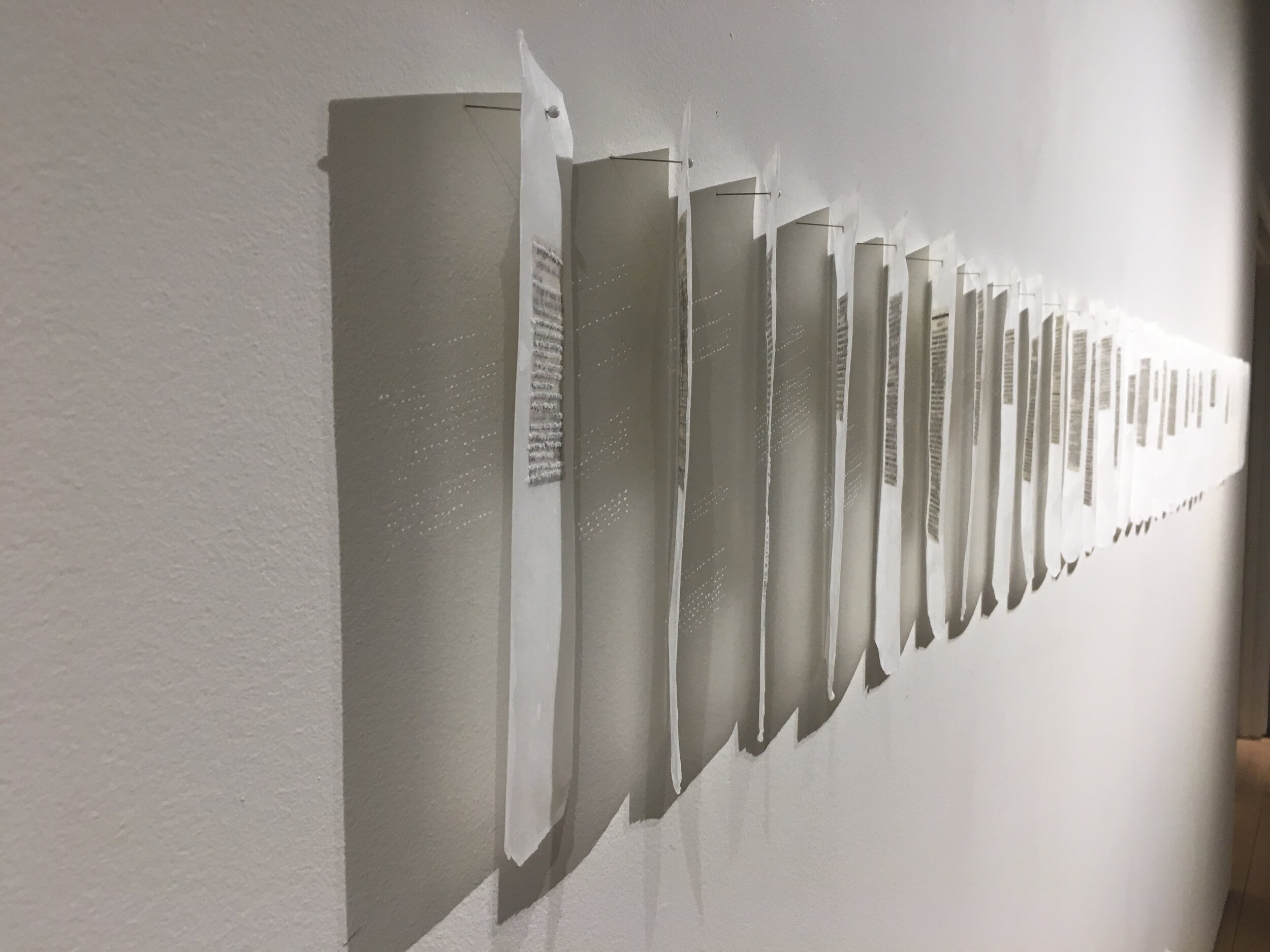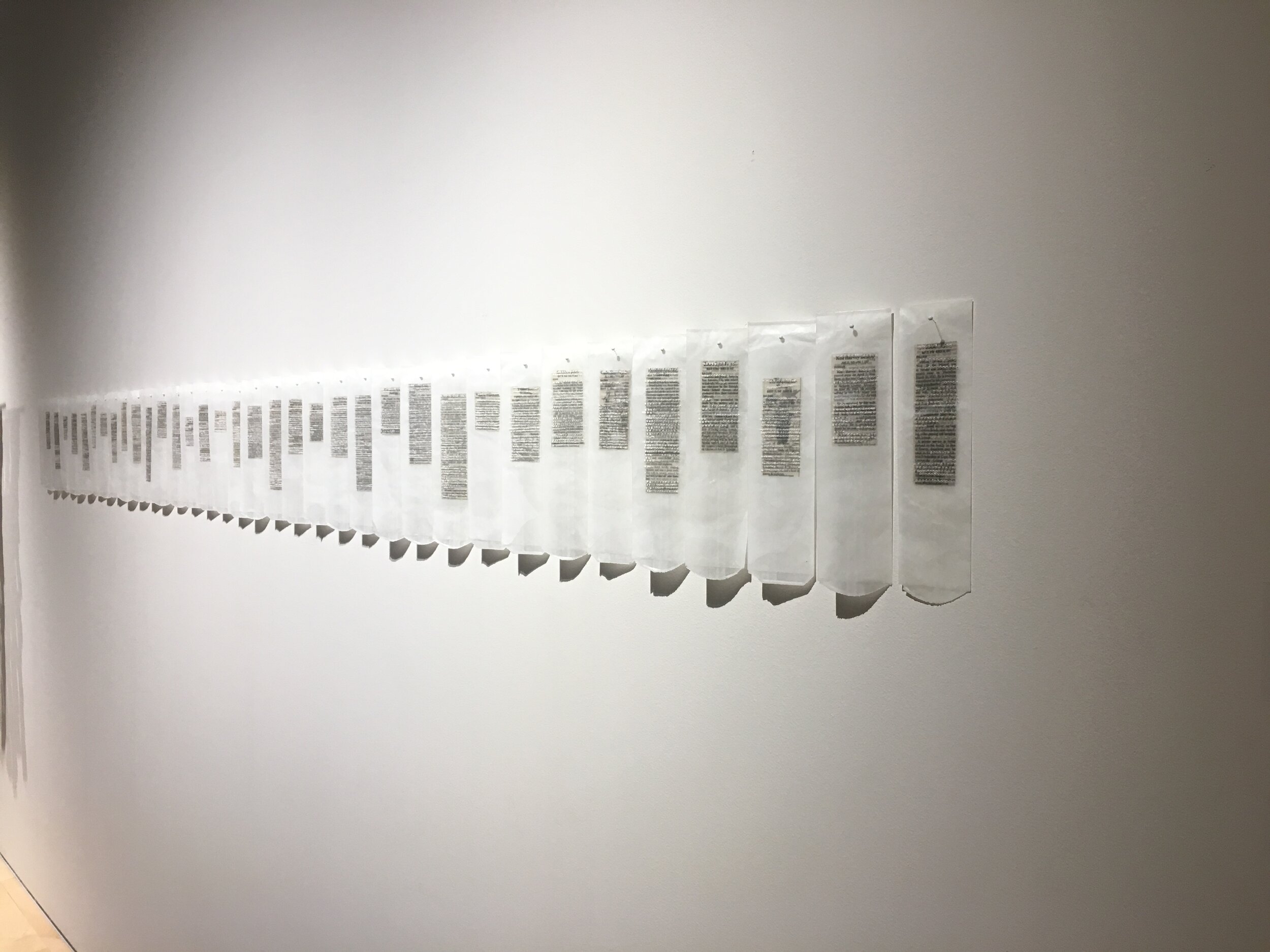


Death, Noticed
newspaper obituaries, beeswax, disposable silverware envelopes
The first time I ever wrote an obituary it was for my step-grandma, Modolen. I started typing it on my phone the day before she died. I left the appropriate blanks: “born on September 7, 1931 and died on April _, 2016”. At that point, my step-dad and I had been sleeping in shifts in her hospital room for 48 hours straight, leaving the room only to make phone calls. My step-grandpa, 91 at the time, had never been good at decision-making and had become nearly incapable of it in the months leading up to this final hospitalization. Which is why I figured it’d be better if I already had a draft obituary ready. We knew it was only a matter of time until we’d be at the funeral home making arrangements.
Her obituary was standard in that it listed only the facts--birth date, birth place, death date, death place, those surviving, those who died before, funeral details and where to send donations instead of flowers, if desired. Which facts stood out: most people called her “Dosie”, her daughter died before she did, she had three grandchildren and one great-grandchild, and she’d been married to her husband for 66 years.
How much of a life can you describe in mere inches of 8-point type? What does an obituary tell us? Most of the time, just the facts, as my step-grandma’s did.
Each obituary in this series was clipped from Raleigh’s News & Observer over several months in 2017. The names were removed and each line of the obituary is machine-stitched without thread, leaving only the marks of the needle-the absence. Each enveloped obituary is then sealed in wax and the some of the machine-stitched holes are punctured again, this time by hand.
Image Descriptions:
Image 1: Detail view. Four partial obituaries in view, hung on gallery wall with pins. Obituaries are not readable, but are encased in white paper envelopes and dipped in wax. Encased obituaries have a series of small holes punched through, forming lines that mimic the lined text of the obituary. The holes let light through and the pinholes of light are visible on the gallery wall.
Image 2: This image zooms out a bit more, with many more obituaries in view. The photograph is taken from an angle, and the pinholes of light on the gallery walls are still slightly visible.
Image 3: Full view of encased obituaries displayed along gallery wall in a straight line.